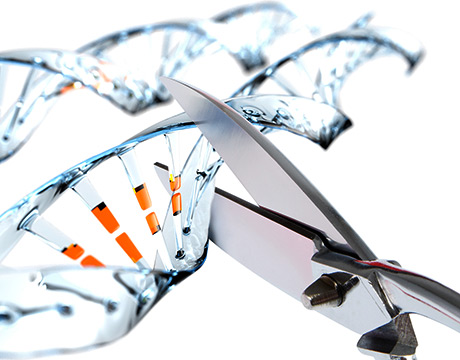The possibility of successfully creating a genetically-modified human is no longer science fiction. Thanks to a new targeted gene modification technology known as CRISPR, genetic modification of human embryos and adults will soon become a reality. The cheap and accurate DNA-editing tool has already been approved by both the UK and US Governments, despite rising controversy regarding its unknown complications and how it can permanently alter future generations.
What is CRISPR?
CRISPR stands for Clustered Regularly Interspaced Short Palindromic Repeat. The name refers to the way short, repeated DNA sequences in the genomes microorganisms are organized. CRISPR was inspired by these organisms’ naturally occurring defense mechanisms.
When bacteria become infected by a virus, they take pieces of the virus’s DNA and incorporate it into their own genome using an enzyme known as “Cas”. These newly-formed sequences are known as CRISPR. The bacteria make RNA copies of these sequences, which help recognize the virus DNA and prevent future invasions.
In Fall 2012, a team of researchers led by UC Berkeley scientists Jennifer Doudna and Emmanuelle Charpentier announced that they had hijacked the bacteria’s CRISPR/Cas immune system to create a new tool that enables the editing of genes, not only in bacteria but also in animals, plants and humans. Their CRISPR/Cas9 system involved CRISPR, a Cas protein called Cas9, and hybrid RNA that could be programmed to identify, cut, and even replace any gene sequence. The RNA acts as a “wanted poster”; it tells a bounty hunter enzyme called CAS9 where to look.
The enzyme scans the cell’s genome to find a DNA match, then slices for the DNA in the cell’s enzymes; to repair damage at that point, scientists can change or add DNA within the cell. By feeding CAS9 the right sequence or guide RNA, scientists can cut and paste parts of the DNA sequence, up to 20 bases long, into the genome at any point.

Why is CRISPR so significant?
The short answer is that CRISPR allows scientists to edit genomes with unprecedented precision, efficiency, and flexibility; more importantly, it is cheap. “The major impact of CRISPR has been in developing new model systems, cells, and animals, that are more rapid to develop and much more accurate than previous genetic models,” Dr. Ed Wild, from UCL Institute of Neurology said.
Aside from having enormous implications for the study of human genetics and combating human diseases, CRISPR also has the potential to boost crop yields and create alternative fuel sources, as well as protect us from insect-borne scourges such as malaria and Zika. There is even a project to bring back the woolly mammoth from extinction using CRISPR technology. Further applications of CRISPR are appearing at a furious pace, and gathering momentum toward therapeutic use in human cells. Indeed, Chinese scientists recently began a human clinical trial using CRISPR-edited cells to fight lung cancer, and US clinical trials will begin this year.
CRISPR is already being used to edit pig DNA so that their organs can be transplanted into humans. Scientists at various institutions are also researching its use in human germ cells, including eggs, sperm, and embryos, which could confer major benefits. Namely, the technology could eradicate hereditary diseases, such as cystic fibrosis, sickle-cell anemia, and Huntington’s disease from a family line altogether.

Why the Controversy?
Some experts are concerned about CRISPR in human genome editing for several reasons. Many feel that there are still too many unknowns about CRISPR, and that using it to edit human genomes is akin to humans attempting to play god. Beyond the effectiveness of the technique itself, there are ethical considerations, such as how to deal with altering the genetic material of future generations without their consent.
It is also necessary to consider another logical conclusion; that people might want to use gene-editing techniques to create humans with super strength, hyper-intelligence, or whatever other genetic traits people might desire. For good reason, such possibilities trigger fears of modified humans and designed babies. These weighty implications, as well as a charged, ongoing patent battle over who owns the technology, ensure that conversations around CRISPR will continue.
For now, answers to the big scientific and philosophical questions around CRISPR may remain unknown. What is clear, however, is that the five years since the first CRISPR studies, the technique has revolutionized biological sciences. With tremendous potential applications on the horizon, the next five years are sure to see even more CRISPR-enabled breakthroughs.
*Published in SCIplanet printed magazine, Summer 2017 Issue.
References
wired.co.uk
nbcnews.com
wildcat.arizona.edu
nationalgeographic.com
gizmodo.com